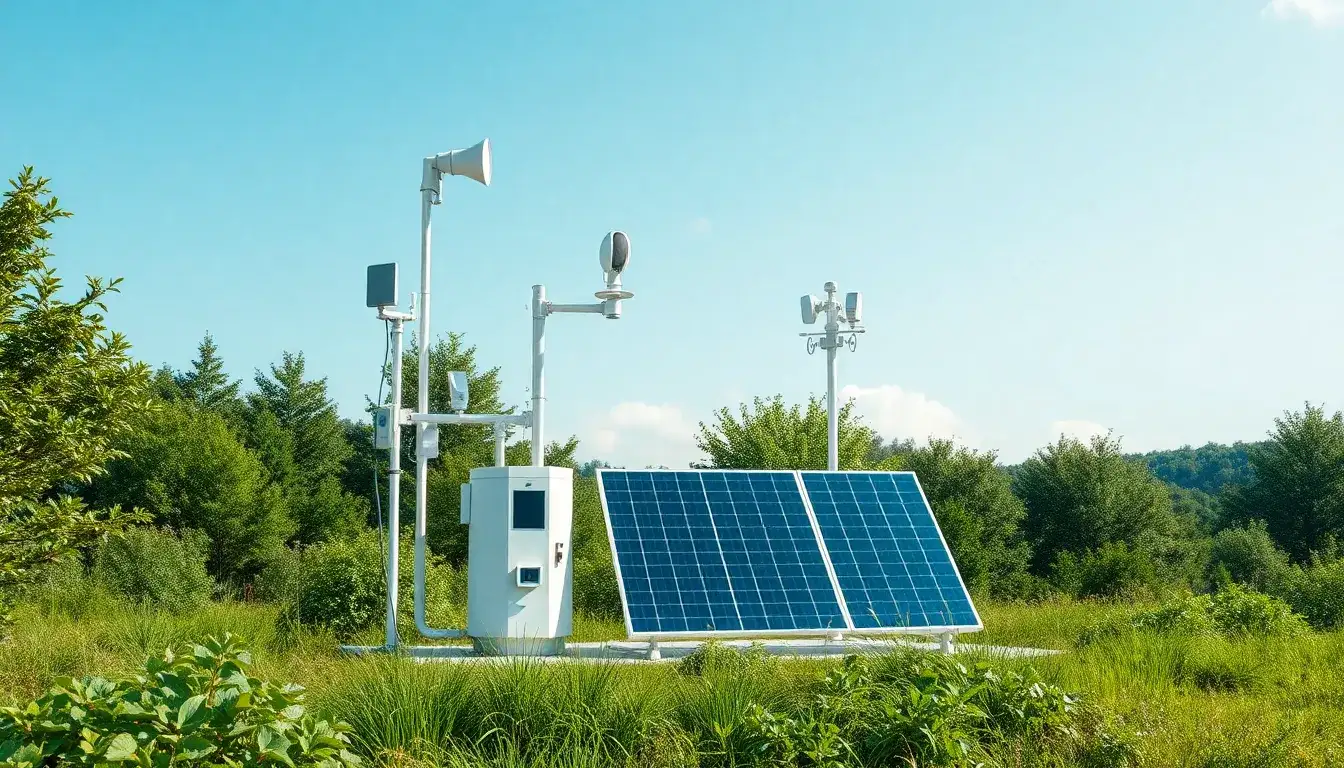
Photovoltaic Meteorological Monitoring Stations: The “Smart Sentinel” Safeguarding Green Energy
As the photovoltaic industry continues to flourish, the Mingqiao (MQ-TGF) photovoltaic meteorological monitoring station is emerging as a “smart sentinel” that enhances power generation efficiency and ensures system safety. These devices accurately collect critical parameters such as solar irradiance, ambient temperature, wind speed and direction, and module temperature, creating a comprehensive “digital health check” system for photovoltaic power plants, thereby facilitating efficient conversion of green energy.
The core monitoring elements of photovoltaic meteorological stations address the pain points of solar power generation: the total irradiance sensor utilizes dual-axis tracking technology, maintaining an error margin of less than 3%; infrared thermometers monitor component surface temperatures in real-time to provide early warnings for hot spot effects; and ultrasonic anemometers paired with wind vanes offer data support for optimizing support angles. Multi-parameter fusion algorithms dynamically calculate the theoretical power generation and produce efficiency diagnostic reports by comparing these figures with actual measurements, accurately identifying operational blind spots such as dust accumulation and shading.
The applications of these stations span the entire lifecycle management of photovoltaic systems: during the site selection phase, long-term monitoring data assists in assessing sunlight duration and seasonal fluctuations; during the operational phase, real-time data is transmitted via 4G/LoRa technology to support remote tuning of inverter parameters; and in research contexts, meteorological satellite data is integrated to develop a “sky-space-ground” verification model. Advanced equipment also incorporates AI image recognition capabilities, facilitating predictive maintenance through the analysis of drone inspection images in conjunction with meteorological data.
Technological innovations are continually expanding the capabilities of these stations: low-power wide-area network technology enables field operation for over 60 days; edge computing modules support local decision-making, allowing for hot spot warnings even in offline conditions; and digital twin technology optimizes tracking bracket control strategies through virtual power plant simulations. Some monitoring stations are even integrated with energy storage systems, dynamically adjusting charge and discharge strategies based on irradiance forecasts to enhance energy utilization.
From large power plants in desert regions to distributed photovoltaic systems on urban rooftops, meteorological monitoring stations are weaving a “smart energy network.” They make the flow of energy from every ray of sunshine visualizable and optimizable, injecting technological momentum into carbon neutrality objectives and becoming an indispensable “smart brain” in the clean energy revolution.







